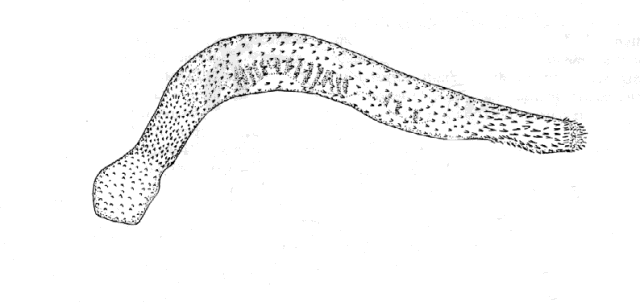|

|
Mollusca: Aplacophora
Description
|

|
Aplacophorans are worm-like molluscs. They are covered with a glistening felt of calcareous spicules, although this is not obvious in some taxa. In some aplacophorans (the Neomeniomorpha) there is a ventral foot which, once recognised, is decidedly mollusc-like. The other group of aplacophorans, the Chaetodermomorpha, lack a ventral foot and are recognised as aplacophorans by the lack of segmentation and the felt of spicules.
Comments
Some aplacophorans might at first glance be confused with Chrysopetalidae or Euphrosinidae since the calcareous spicules are slightly reminiscent of polychaete chaetae. However, Aplacophorans have no segmentation, which is very evident in chrysopetalida and euphrosinids, especially in ventral view.
Aplacophorans apparently burrow in soft sediments and are typically found on continental shelf and the upper continental slope. The Australian fauna is highly diverse by world standards, and comprises about 32 species in 10 families, although additional taxa remain undescribed.
References
The following 3 publications by Scheltema document what is known of the Australian fauna.
Scheltema, AH. 1998. Class Aplacophora. In Beesley, PL, Ross, GJB and Wells, A (eds), Fauna of Australia. Mollusca: The Southern Synthesis. Fauna of Australia Volume 5. CSIRO Publishing, Melbourne, pp. 145-159.
Scheltema, AH. 1989. Australian aplacophoran molluscs. I. Chaetodermamorpha from Bass Strait and the continental slope off south-eastern Australia. Records of the Australian Museum 41, 43-62.
Scheltema, AH. 2001. Aplacophora. In Wells, A and Houston, WWK (eds). Zoological Catalogue of Australia. Vol. 17.2. Mollusca: Aplacophora, Polyplacophora, Scaphopoda, Cephalopoda. CSIRO Publishing, Melbourne, pp. 1-18.
|
 |